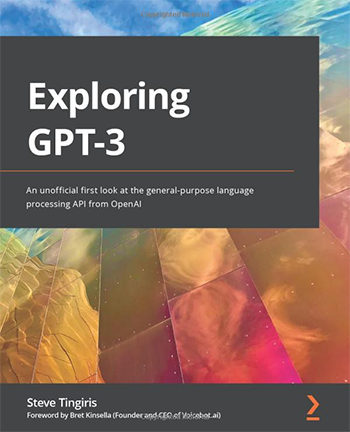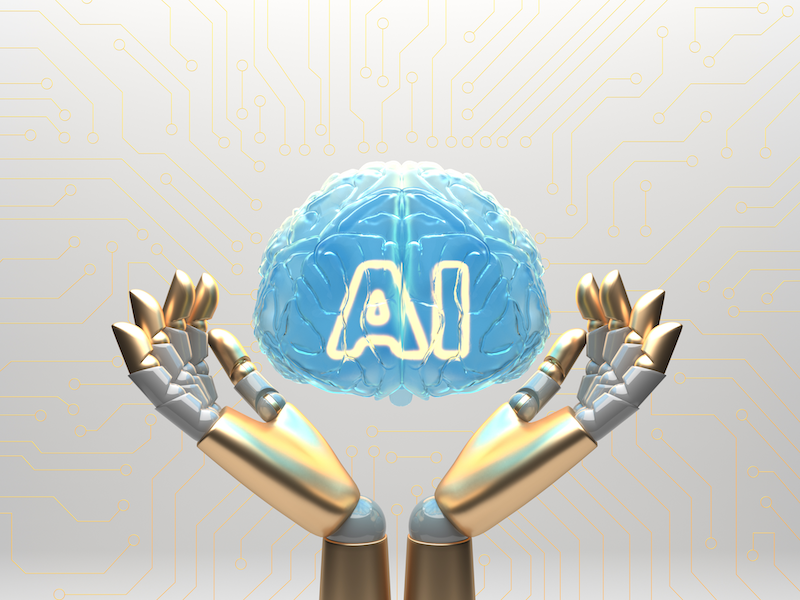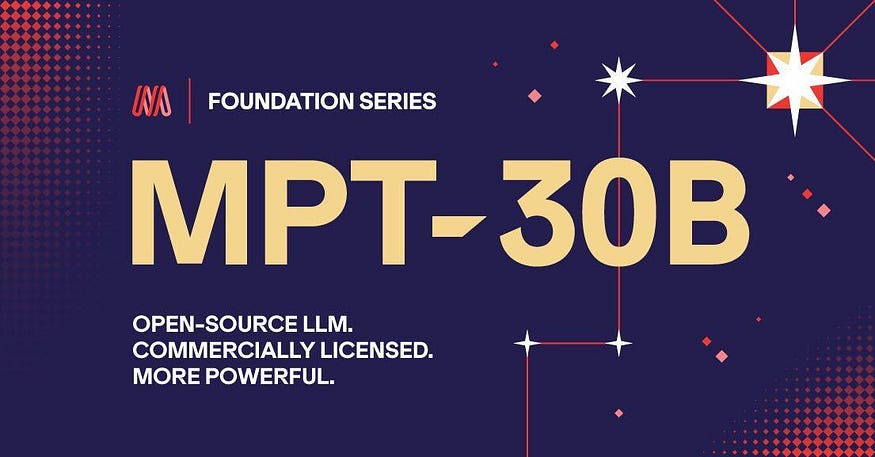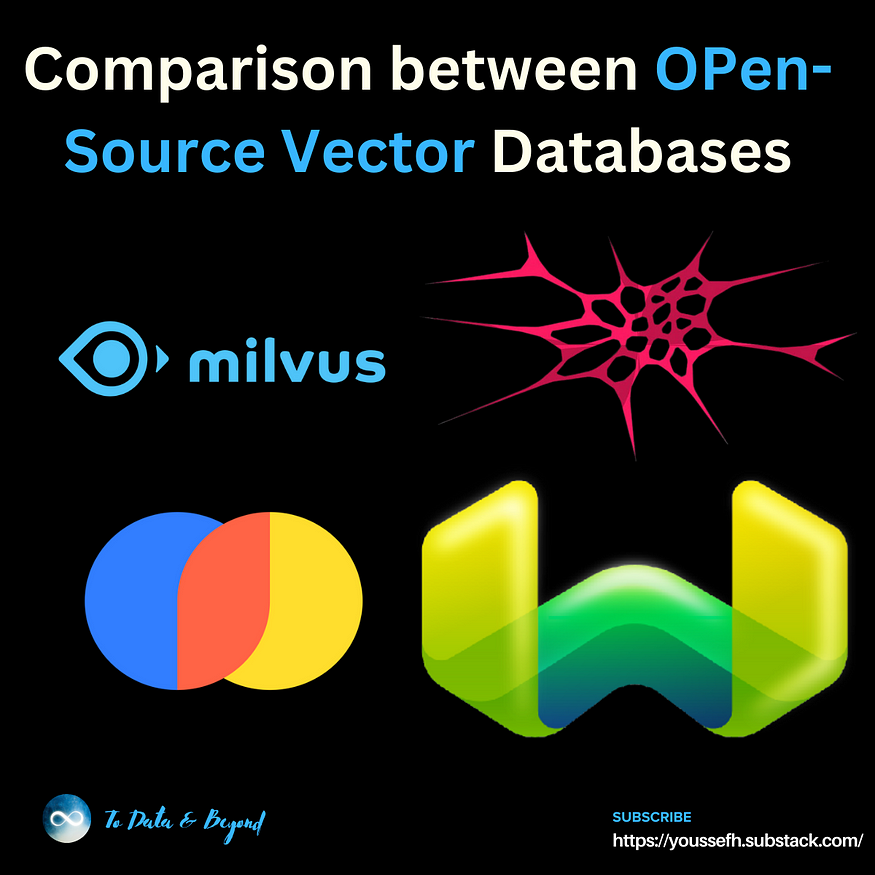
Unraveling the Magic of Generative AI: The Ultimate FAQ Extravaganza! ✨
Last Updated on March 20, 2023 by Editorial Team

Top of the most common questions in generative AI answered
TL;DR:
Buckle up for an exciting ride through the world of Generative AI! In this comprehensive FAQ, we’ve tackled the burning questions that explore the ins and outs of these powerful AI models, their thrilling applications, and the challenges they bring. Get ready to dive deep into how generative AI models can fuel creativity, transform industries, and spark innovation while navigating ethical concerns and hurdles to ensure a responsible and awe-inspiring future!
Disclaimer: This article uses Cohere for text generation.
Table of Contents
- What is generative AI?
- How does generative AI differ from other types of AI?
- What are the most popular generative AI models?
- What is the history and evolution of generative AI?
- How do neural networks contribute to generative AI?
- What are the primary applications of generative AI?
- How does natural language processing (NLP) relate to generative AI?
- What is the role of unsupervised learning in generative AI?
- How do transformers work in generative AI models?
- What is the difference between Cohere, GPT-3 and GPT-4?
- How are generative AI models trained?
- What are some of the challenges faced during generative AI model training?
- How do generative AI models generate creative content?
- What is the concept of fine-tuning in generative AI models?
- How do generative AI models maintain context over long sequences?
- How can we control the output of generative AI models?
- How do generative AI models handle multiple languages?
- What are some ethical concerns surrounding generative AI?
- How can generative AI models be made more robust and reliable?
- What are the limitations of generative AI?
- How can we evaluate the quality of generated content from generative AI models?
- How can we mitigate biases in generative AI models?
- How can generative AI models be used in fields like healthcare, finance, or education?
- Can generative AI models be used for real-time applications?
- How can we ensure the security and privacy of generative AI models?
- How can we make generative AI models more energy-efficient?
- Can generative AI models be used for reinforcement learning?
- What is the role of generative AI models in the field of robotics?
- How can generative AI models contribute to the field of art and design?
- Can generative AI models be used for anomaly detection?
Generative AI has been making waves in the technology landscape, transforming various industries and giving rise to a plethora of innovative applications. During my journey in generative AI, I’ve encountered numerous questions and misconceptions about this groundbreaking technology. This FAQ aims to provide clear, concise answers to the most common questions, helping readers grasp the fundamentals, understand the technology’s capabilities, and identify its potential impact on our lives.
In this blog, we will explore the top most common questions related to generative AI, covering topics such as its history, neural networks, natural language processing, training, applications, ethical concerns, and the future of the technology. By understanding the answers to these questions, you’ll gain a solid foundation to further explore the world of generative AI and its remarkable potential.
So let’s dive in and begin our journey into the fascinating realm of generative AI!
Get started generating, summarizing, and classifying content with Cohere!
Generative AI FAQ
What is generative AI?
Generative AI is a subset of artificial intelligence that focuses on creating new content or data by learning patterns and structures from existing data. By leveraging advanced algorithms, generative AI models can generate text, images, music, and more, with minimal human intervention. These models can mimic human-like creativity and adapt to a wide range of tasks, from composing poetry to designing new products.
How does generative AI differ from other types of AI?
While most AI systems focus on processing and analyzing data to make decisions or predictions, generative AI goes a step further by creating entirely new data based on the patterns it has learned. Traditional AI models, such as classification or regression algorithms, solve specific problems by finding correlations in the data. In contrast, generative AI aims to understand the underlying structure and generate novel content that resembles the original data in terms of style, structure, or theme.
What are the most popular generative AI models?
Some of the most popular generative AI models include:
- Generative Adversarial Networks (GANs): A pair of neural networks trained together, with one generating fake data and the other trying to distinguish between real and fake data. GANs have been widely used for generating realistic images, enhancing image resolution, and synthesizing new data.
- Variational Autoencoders (VAEs): A type of autoencoder that learns to generate new data by approximating the probability distribution of the input data. VAEs are commonly used for image generation, data compression, and denoising tasks.
- Transformer-based models: These models, such as Cohere’s models, GPT-3 and GPT-4, use the transformer architecture to process and generate sequences of data. They have been particularly successful in natural language processing tasks, such as text generation, translation, and summarization.
What is the history and evolution of generative AI?
The history of generative AI can be traced back to the early days of AI research in the 1950s and 1960s when researchers started exploring algorithms for generating content, such as computer-generated poetry and music. The field evolved gradually, with the development of neural networks in the 1980s and 1990s, leading to the emergence of more sophisticated generative models like autoencoders and recurrent neural networks (RNNs).
The breakthrough moment for generative AI came with the introduction of Generative Adversarial Networks (GANs) in 2014 by Ian Goodfellow and his team. GANs sparked a surge of interest in generative models and their applications. The introduction of transformer-based models, such as Cohere’s models, GPT-2, GPT-3 and GPT-4, further revolutionized the field, particularly in natural language processing and text generation.
How do neural networks contribute to generative AI?
Neural networks are the backbone of many generative AI models. These networks consist of interconnected nodes or neurons organized in layers, mimicking the structure of the human brain. Neural networks can learn complex patterns, structures, and dependencies in the input data, allowing them to generate new content that resembles the original data.
Generative AI models often use deep learning techniques, which involve multiple layers of neurons in the neural network, enabling the model to learn more abstract and intricate patterns. Some popular neural network architectures used in generative AI include convolutional neural networks (CNNs), recurrent neural networks (RNNs), and transformers. Each of these architectures has its unique strengths and capabilities, making them suitable for different generative tasks.
What are the primary applications of generative AI?
Generative AI has a wide range of applications across various industries, including:
- Content creation: Generating text, images, videos, and audio for marketing, journalism, or entertainment purposes.
- Data augmentation: Creating synthetic data to enhance the training of machine learning models, particularly when there is a lack of real-world data.
- Art and design: Generating innovative designs, patterns, or artwork for fashion, architecture, and other creative domains.
- Drug discovery: Accelerating the process of discovering new drugs by generating novel molecular structures and predicting their properties.
- Gaming: Creating procedurally generated content, such as levels, characters, or narratives, to enhance gaming experiences.
- Personalization: Generating personalized recommendations, responses, or content for users based on their preferences and behavior.
How does natural language processing (NLP) relate to generative AI?
Natural language processing (NLP) is a subfield of AI that focuses on the interaction between computers and human language. Generative AI plays a significant role in NLP by enabling the generation of human-like text, summarization, translation, and more. Transformer-based generative models like Cohere’s models, GPT-3 and GPT-4 have been particularly successful in various NLP tasks due to their ability to capture long-range dependencies and context in textual data.
Generative AI models in NLP can be used for tasks such as:
- Text generation: Writing human-like text, including stories, articles, or responses in a conversational setting.
- Summarization: Condensing long text documents into shorter, more manageable summaries.
- Machine translation: Automatically translating text from one language to another.
- Sentiment analysis: Generating text with a specific sentiment or emotion, such as positive or negative reviews.
- Paraphrasing: Rewriting text in different words while preserving its original meaning.
What is the role of unsupervised learning in generative AI?
Unsupervised learning is a type of machine learning where models learn patterns and structures in the data without being provided explicit labels or targets. Generative AI often relies on unsupervised learning techniques to discover latent structures and distributions in the data, enabling the generation of new content.
In unsupervised learning, generative AI models learn to represent the input data in a lower-dimensional space, capturing its essential features and patterns. This learned representation can then be used to generate new samples that resemble the original data. Popular unsupervised learning techniques used in generative AI include autoencoders, variational autoencoders (VAEs), and generative adversarial networks (GANs).
How do transformers work in generative AI models?
Transformers are a type of neural network architecture introduced by Vaswani et al. in 2017 that has revolutionized natural language processing and generative AI. Transformers utilize a mechanism called self-attention, which allows the model to weigh the importance of different words or tokens in a sequence based on their contextual relationships.
In generative AI models, transformers generate new content by predicting the next token in a sequence, given the previous tokens. This process is repeated iteratively, with each newly predicted token serving as input for the subsequent prediction. Transformers’ ability to capture long-range dependencies and maintain context over large sequences makes them highly effective for generating coherent, contextually relevant content.
Cohere and OpenAI models are prominent examples of transformer-based generative AI models that have demonstrated remarkable performance in a variety of NLP and generation tasks.
What is the difference between Cohere, GPT-3 and GPT-4?
Cohere, GPT-3, and GPT-4 are state-of-the-art generative AI models used for a variety of natural language processing tasks. While they all build on the foundation of transformer-based architectures, there are differences in terms of their development, implementation, and performance.
Development:
- The Cohere platform is developed by Cohere, an AI startup founded by
Aidan Gomez, Ivan Zhang, Nick Frosst. The company aims to build large-scale language models with a focus on real-world use cases providing a practical API for enterprises, startups, and developers alike. - GPT-3 and GPT-4 are both developed by OpenAI, a leading AI research organization. GPT-3 was introduced in 2020, while GPT-4 is a more recent and advanced version of the model.
Implementation:
- Cohere’s models rely on transformer architecture and similar training techniques compared to OpenAI. However, the company focuses on fine-tuning these models for specific tasks and applications, making them more suitable for real-world use cases for enterprises, startups, and developers alike.
- GPT-3 and GPT-4 are part of the Generative Pre-trained Transformer (GPT) series, which utilizes unsupervised learning and self-attention mechanisms to generate human-like text based on the context of the input sequence.
Access and Usage:
- Cohere offers an API for developers and businesses to access and utilize their models for a range of NLP tasks, making it a viable alternative to OpenAI’s GPT models.
- OpenAI also provides access to GPT-3 through an API that allows developers to integrate the model into their applications. GPT-4, being a more recent development, might not be as widely accessible at the moment.
In summary, while GPT-3, GPT-4, and Cohere’s models all leverage transformer-based architectures for natural language processing tasks, they differ in terms of their development, implementation, and performance. Nonetheless, all these models represent the cutting-edge of generative AI and offer promising solutions for a wide array of language-related applications.
How are generative AI models trained?
Generative AI models are typically trained using a two-step process:
- Pre-training: In this phase, models are trained on large datasets to learn general language patterns and structures. This is often done using unsupervised learning techniques, where the model learns by predicting the next token in a sequence, given the previous tokens. For example, transformer-based models like Cohere’s models, GPT-3 and GPT-4 are pre-trained using a vast corpus of text from the internet.
- Fine-tuning: After pre-training, generative AI models are fine-tuned on specific tasks or datasets. During fine-tuning, the model is trained using supervised learning, where it learns to generate outputs based on labeled examples. This process allows the model to adapt to specific tasks or domains, making it more useful for real-world applications.
What are some of the challenges faced during generative AI model training?
Training generative AI models involves several challenges, such as:
- Computational resources: Training large-scale generative models requires substantial computational power, often involving multiple GPUs or TPUs, which can be expensive and time-consuming.
- Data quality and quantity: Generative models require large, diverse, and high-quality datasets to learn effectively. Obtaining and preprocessing such datasets can be challenging.
- Model complexity: Generative models often have millions or billions of parameters, making them complex and difficult to optimize.
- Overfitting: Generative models can memorize specific patterns or data points in the training data, leading to poor generalization and performance on unseen data.
- Bias: Models may learn and reproduce biases present in the training data, leading to ethical concerns and unintended consequences.
How do generative AI models generate creative content?
Generative AI models generate creative content by sampling from the probability distribution they have learned during training. These models learn to represent the underlying structure and patterns in the training data, which allows them to generate new content that resembles the original data in terms of style, structure, or theme.
In practice, generative models generate content by predicting the next element (e.g., token, pixel, or note) in a sequence, given the previous elements. This process is repeated iteratively, with each newly predicted element serving as input for the subsequent prediction. The generation process can be guided by various techniques, such as temperature settings or beam search, to control the randomness or diversity of the generated content.
What is the concept of fine-tuning in generative AI models?
Fine-tuning is the process of adapting a pre-trained generative AI model to a specific task or domain by training it further on a smaller, task-specific dataset. This process leverages the knowledge the model has acquired during pre-training and helps it generalize better to the specific task, improving its performance and relevance.
During fine-tuning, the model’s parameters are updated using supervised learning, where it learns to generate outputs based on labeled examples from the task-specific dataset. Fine-tuning allows the model to acquire domain-specific knowledge and adapt its generation capabilities to the specific requirements of the target application.
How do generative AI models maintain context over long sequences?
Generative AI models maintain context over long sequences by leveraging their ability to capture relationships and dependencies between different elements in the input data. Transformer-based models, for example, use self-attention mechanisms that allow them to weigh the importance of different tokens in a sequence based on their contextual relationships.
As a result, these models can maintain context over long sequences by effectively encoding and decoding the relationships between different elements in the input data. This ability to capture long-range dependencies and context enables generative AI models to generate coherent, contextually relevant content even over extended sequences.
How can we control the output of generative AI models?
There are several techniques to control the output of generative AI models:
- Prompt engineering: Carefully crafting input prompts can guide the model to generate more relevant and specific outputs. This may involve rephrasing questions or providing additional context.
- Temperature settings: Adjusting the temperature parameter during generation influences the randomness of the generated content. Lower temperature values result in more focused, deterministic outputs, while higher values produce more diverse and creative content.
- Top-k or nucleus sampling: These sampling methods limit the set of tokens the model can generate at each step, selecting from the top-k most probable tokens or the set of tokens whose cumulative probability exceeds a certain threshold.
- Fine-tuning: Training the model on a specific task or domain can help it generate content that is more relevant and contextually appropriate for the target application.
- Incorporating constraints or rewards: Techniques like reinforcement learning or constrained decoding can be used to encourage the model to generate outputs that satisfy specific criteria, such as maintaining a certain sentiment, length, or structure.
How do generative AI models handle multiple languages?
Generative AI models can handle multiple languages by being trained on large-scale multilingual datasets. During training, the model learns to represent the structure, patterns, and relationships present in the different languages included in the dataset.
Multilingual generative models, such as mBERT (Multilingual BERT) or XLM-R (Cross-lingual Language Model-RoBERTa), can generate content in multiple languages or perform tasks like translation, sentiment analysis, or summarization across languages. These models are often pre-trained on a diverse range of texts from various languages, enabling them to generalize and perform well on language-specific tasks even when the amount of available data for a particular language is limited.
What are some ethical concerns surrounding generative AI?
Ethical concerns surrounding generative AI include:
- Bias: Generative models may learn and reproduce biases present in their training data, leading to biased or discriminatory outputs.
- Misinformation and manipulation: Generative AI models can produce highly convincing fake content, which can be used to spread misinformation, create deepfakes, or manipulate public opinion.
- Privacy: Since generative models are trained on large datasets, there is a risk of unintentionally including personally identifiable information (PII) or sensitive content in the generated outputs.
- Creative attribution and copyright: The question of whether generated content should be attributed to the AI model, its creators, or the users who interact with the model raises concerns about intellectual property rights and the nature of creativity.
- Economic impact: The use of generative AI models in content creation, marketing, and other industries may lead to job displacement or changes in labor market dynamics.
How can generative AI models be made more robust and reliable?
Generative AI models can be made more robust and reliable through several approaches:
- Improving training data quality: Curating diverse, unbiased, and high-quality training data can help reduce the risk of biased outputs and improve the model’s overall performance.
- Fine-tuning and domain adaptation: Adapting the model to specific tasks or domains can improve its relevance, accuracy, and contextual awareness in the target application.
- Regularization and architecture improvements: Techniques such as dropout, layer normalization, or architectural changes can be employed to reduce overfitting and improve the model’s generalization capabilities.
- Incorporating external knowledge: Integrating external knowledge sources, such as knowledge graphs or structured databases, can enhance the model’s understanding and reasoning abilities.
- Monitoring and evaluation: Continuous monitoring, evaluation, and feedback can help identify and address issues related to the model’s performance, robustness, and fairness.
What are some limitations of generative AI models?
While I am by no means an expert in generative AI, some possible limitations of generative AI models include:
- Verbose or repetitive outputs: Generative AI models can sometimes produce overly verbose or repetitive text that may not be concise or directly address the input query.
- Sensitivity to input phrasing: The performance of generative AI models can be sensitive to the phrasing of input prompts, with slight rephrasing potentially leading to different or more relevant outputs.
- Inability to handle ambiguous queries: When presented with ambiguous or unclear input prompts, generative AI models may struggle to generate appropriate or accurate responses.
- Lack of common sense or reasoning: Although generative AI models can generate human-like text, they may still produce outputs that lack common sense or logical consistency, as they rely on pattern recognition rather than true understanding.
- Ethical concerns and biases: As mentioned earlier, generative AI models may learn and reproduce biases present in their training data, raising ethical concerns and affecting the fairness of the generated outputs.
- Long-term dependency and context maintenance: Despite advances in maintaining context over long sequences, generative AI models can still struggle with very long input sequences or retaining context throughout an extended conversation.
Addressing these limitations remains an active area of research, with ongoing advancements in generative AI models aiming to improve their performance, robustness, and usability in real-world applications.
How can we evaluate the quality of generated content from generative AI models?
There are several methods to evaluate the quality of generated content from generative AI models, including:
- Automatic metrics: Metrics like BLEU, ROUGE, METEOR, and CIDEr measure various aspects of generated text, such as n-gram overlap, semantic similarity, or syntactic structure, and compare it to reference texts or human-generated content.
- Human evaluation: Human judges can assess generated content based on criteria like fluency, coherence, relevance, and creativity. Human evaluation is often considered the gold standard but can be time-consuming and subjective.
- Adversarial evaluation: Generative models can be paired with discriminative models to distinguish between generated and real content. The performance of the discriminative model in distinguishing between the two can serve as a proxy for the quality of the generated content.
- Task-specific evaluation: Depending on the specific application, custom evaluation metrics or benchmarks can be used to measure the model’s performance, such as translation quality, summarization accuracy, or question-answering correctness.
How can we mitigate biases in generative AI models?
Mitigating biases in generative AI models can involve several strategies:
- Curate diverse and unbiased training data: Ensuring that the training data is representative of various perspectives and minimizes inherent biases can help reduce the risk of biased outputs.
- Fine-tuning on debiased data: Fine-tuning the model on a smaller, carefully curated dataset that counteracts biases present in the original training data can help mitigate potential bias in the generated content.
- Develop fairness-aware models: Techniques like adversarial training, fairness constraints, or re-sampling can be used to encourage the model to generate fair and unbiased outputs.
- Bias monitoring and evaluation: Continuously monitoring and evaluating the model’s outputs for potential biases can help identify and address bias-related issues.
- Post-hoc bias correction: Outputs from generative AI models can be processed using techniques like rule-based filtering, re-ranking, or rewriting to reduce potential biases.
How can generative AI models be used in fields like healthcare, finance, or education?
Generative AI models can be applied across various fields, including healthcare, finance, and education, for tasks such as:
- Healthcare: Generating personalized health recommendations, predicting patient outcomes, summarizing medical records, creating patient-specific treatment plans, or assisting in medical research.
- Finance: Automating financial report generation, creating personalized investment recommendations, summarizing financial news, generating trading signals, or detecting potential fraud.
- Education: Creating personalized learning content, generating adaptive quizzes, summarizing educational materials, providing instant feedback on student work, or assisting with language learning and translation.
Can generative AI models be used for real-time applications?
Generative AI models can be used for real-time applications, depending on the computational requirements of the specific task and the hardware available. Smaller models or those optimized for low-latency inference can generate content quickly, making them suitable for real-time applications like chatbots, conversational agents, or real-time translation.
However, large-scale generative AI models, like Cohere’s models, GPT-3 or GPT-4, may require more substantial computational resources, potentially limiting their suitability for real-time applications, particularly on resource-constrained devices or environments.
How can we ensure the security and privacy of generative AI models?
Continuously monitoring and auditing the model’s outputs and usage can help identify and address potential privacy or security issues.
- Access control and authentication: Implementing access control and authentication mechanisms can ensure that only authorized users can interact with the generative AI model and its outputs.
- Privacy-preserving techniques: Techniques like differential privacy, federated learning, or homomorphic encryption can be employed to protect the privacy of the data used during model training or inference.
- Regular updates and patches: Keeping the generative AI model and its underlying infrastructure up to date with the latest security patches and best practices can help minimize potential vulnerabilities.
- User education and awareness: Informing users about the potential risks and privacy concerns associated with generative AI models can help promote responsible usage and encourage reporting any issues or concerns.
How can we make generative AI models more energy-efficient?
Making generative AI models more energy-efficient can involve several strategies:
- Model compression: Techniques like pruning, quantization, or knowledge distillation can be used to reduce the size and computational complexity of generative AI models, making them more energy-efficient.
- Hardware optimization: Custom hardware, such as specialized AI accelerators, can be designed to optimize energy efficiency for AI model inference and training.
- Algorithmic improvements: Developing more efficient algorithms and training techniques can reduce the computational requirements of generative AI models, leading to lower energy consumption.
- Adaptive computation: Dynamically adjusting the computational resources allocated to the model based on the complexity of the input or the desired output quality can help optimize energy usage.
Can generative AI models be used for reinforcement learning?
Generative AI models can be used in reinforcement learning as part of the agent’s policy or value function approximation. These models can generate actions or predict action values based on the agent’s current state, helping the agent learn to interact with its environment effectively.
Additionally, generative AI models can be used to create synthetic environments or simulate transitions, enabling more efficient exploration and data collection during reinforcement learning.
What is the role of generative AI models in the field of robotics?
In robotics, generative AI models can be used for various tasks, including:
- Motion planning and control: Generating motion trajectories, grasping strategies, or control policies for robotic manipulators, drones, or autonomous vehicles.
- Perception and understanding: Generating object detections, semantic segmentation maps, or 3D reconstructions based on sensor data.
- Human-robot interaction: Generating natural language responses, gestures, or facial expressions to enable more intuitive and engaging interactions between robots and humans.
- Imitation learning and skill acquisition: Learning new behaviors or skills by generating actions that mimic human demonstrations or expert policies.
How can generative AI models contribute to the field of art and design?
Generative AI models can contribute to art and design by:
- Generating original artwork, music, or designs that exhibit creativity, novelty, or aesthetic value.
- Assisting artists or designers in their creative process by suggesting ideas, styles, or compositions.
- Automating or streamlining repetitive tasks, such as generating variations of a design or producing procedural content for video games.
- Personalizing and adapting creative content to cater to individual preferences, cultural backgrounds, or specific contexts.
Can generative AI models be used for anomaly detection?
Generative AI models can be used for anomaly detection by learning to generate or reconstruct normal patterns of data. Once trained, these models can be used to identify anomalies by comparing the generated or reconstructed data to the actual data. If the discrepancy between the generated and actual data is significantly high, it can indicate the presence of an anomaly.
Examples of generative AI models used for anomaly detection include Variational Autoencoders (VAEs) and Generative Adversarial Networks (GANs). These models can be employed for anomaly detection in diverse domains, such as network security, fraud detection, industrial monitoring, or healthcare.
Conclusion
In this Generative AI FAQ, we have covered a wide range of questions related to generative AI models, their capabilities, applications, and limitations, as well as ethical concerns and strategies to address them. As technology continues to advance, we can expect to see even more sophisticated generative AI models with improved performance, robustness, and efficiency. It is crucial to stay informed and engaged in the ongoing conversation about these models, their potential impact on society, and the ways in which we can harness their power responsibly.
As we move forward, it will be essential to continue exploring ways to improve the quality, fairness, and usability of generative AI models, while also considering the ethical implications and potential risks associated with their use. By fostering a community of researchers, practitioners, and users who share knowledge, insights, and best practices, we can collectively shape the development and deployment of generative AI technologies in a manner that benefits society as a whole.
Get started generating, summarizing, and classifying content with Cohere!
Join me on this incredible generative AI journey and be a part of the revolution. Become a member or buy me a coffee. Stay tuned for updates and insights on generative AI by following me on Twitter, Linkedin or my website. Your support is truly appreciated!
Resource recommendations to get started with generative AI:
Generative AI Tutorials, Guides, and Demos

Generative AI with Python and Tensorflow 2

Transformers for Natural Language Processing


Unraveling the Magic of Generative AI: The Ultimate FAQ Extravaganza! ✨ was originally published on Medium, where people are continuing the conversation by highlighting and responding to this story.

 Logo:
Logo:  Areas Served:
Areas Served: 









